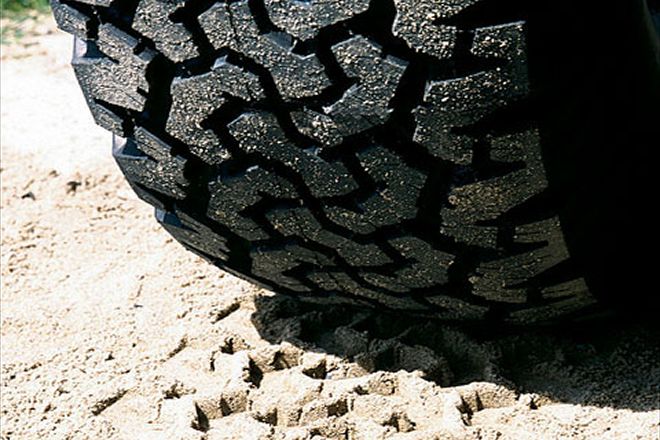
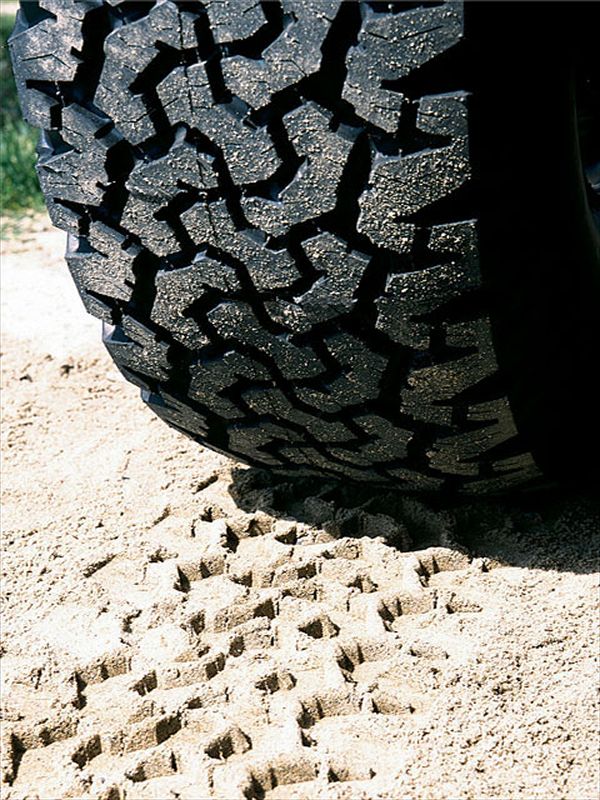
There was a covert operation going down at Moab this year. While most people were deep in the trails, BFGoodrich was out there taking a survey on concept tread designs for its next-generation all-terrain. The tiremaker was having people consider each pattern and rank them, then explain what they liked or hated about what they saw. If you think about it, it makes sense to draw in the public before moving forward on any tire idea. Sure, performance is crucial, but aesthetics? That's nearly as important to a tire's success.
We spend a lot of time doing comparos and shootouts in this magazine, but how does the design, material, and marketing mumbo-jumbo actually factor in to what makes a tire right for your truck and needs? Once you understand the genetic makeup and science behind its existence, you'll become a better shopper. We spoke to engineers, program managers, and developers at BFG (Gary Enterline and Kip Newton) and Pro Comp (Jedd Emans, Jeremy Jacobs, and Nick Schieltz) for behind-the-scenes action.
We'll give you only enough info to understand how it's done but not enough to make your own, because the last thing we need are the BFGs and Pro Comps of the world taking a hit out on us.
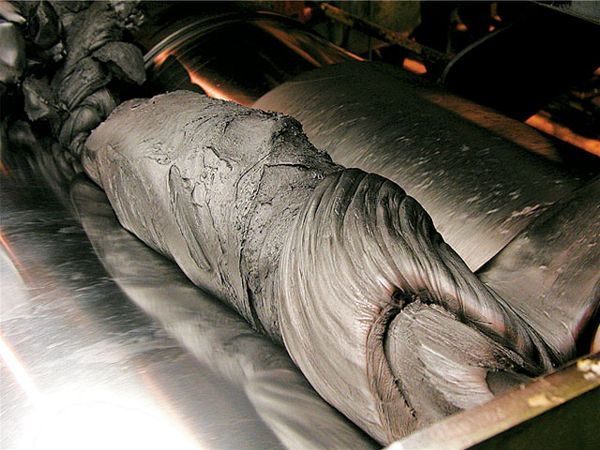
The tire-making process is essentially the same for all manufacturers: Take the tread sketches (usually in 2-D) and feed them into a computer program to create a 3-D model, which allows for easy modifying of dimensions, profile, footprint, and so on. Next would be to choose carcass construction. Does it need puncture resistance? Is a comfortable street ride important? Following the virtual tire would be a mold. And, just as with an automaker, a tire manufacturer utilizes a proving ground for testing. For example, Pro Comp has a track south of San Antonio, while BFG's is in Lawrence County, South Carolina.
The thousands of acres include varying asphalt tracks, surfaces, and off-road areas, so once they have a physical tire, they head there. They may also hit places such as Michigan or Montana for winter testing, and could take advantage of partners in the off-road business to do real-world testing (say, rockcrawling championship competitors). The type of tire-street, all-terrain, mud, rock-determines where it spends most of its evaluation time. For example, BFG's rock-ready Krawler would inevitably spend less time on the road. Then, once the prototype tire has been proven to work as designed, it would head to production and off to the tire shops.
It's easy to forget those four circles that help you float across a mud pit or crawl right over a rock are also responsible for holding up your truck. That's done via the tension in the carcass, which can also be called the casing or body. The outermost part of the tire is the tread or crown area, which transmits the forces to the ground and is what features the grooves and lugs. The sidewall usually starts at the end of the tread lugs and wraps down to the bead area.
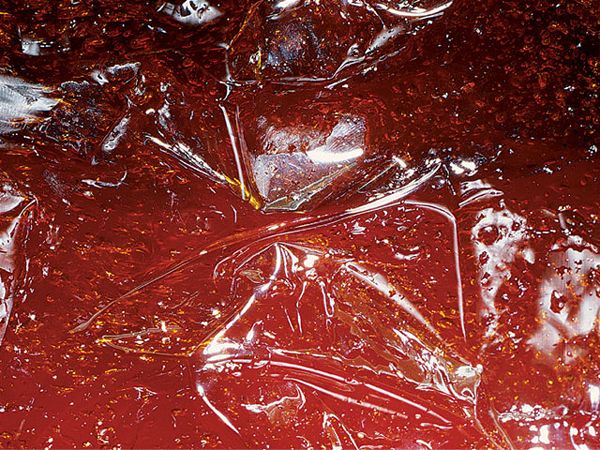
Tires in the United States generally are constructed of two steel beads, 10 or more polyester plies, and two or more steel belts. To increase high-speed capabilities, there may also be 10 or more layers of nylon or Kevlar above the belts, restricting the belts from rising. Kevlar is used because it's super strong-but it's also pricey and that means it can make a tire more expensive. The tire's purpose (mud, street, or multipurpose) will determine which materials are put into its construction and how many layers of each will be used.
The tire's intended use will also determine the tread pattern, such as how big the grooves will be, where they are located, and whether they're straight or angled. Engineers have the challenge of not losing function for eye appeal: traction, element stability, wear-resistance, puncture and chip prevention, hydroplane repression, and manufacture-ability among the considerations. Remember those secret patterns BFG showed at Moab? When the concept tread chosen for the new all-terrain goes into production, it may not look exactly like what ranked highest in the survey. The engineers will come close, but if the grooves that screamed rugged in the survey cause the tire to shred rubber when rolling over rocks, its design would have to be tuned. But tire manufacturers get rack-appeal so they'd try not to stray too much. And they also know that making tires is all about compromises. They're actually accepting of the fact that building a tire may require some sacrifices-as in, they know that if you'll end up a hero off road, you'll probably be OK with extra noise on the street.
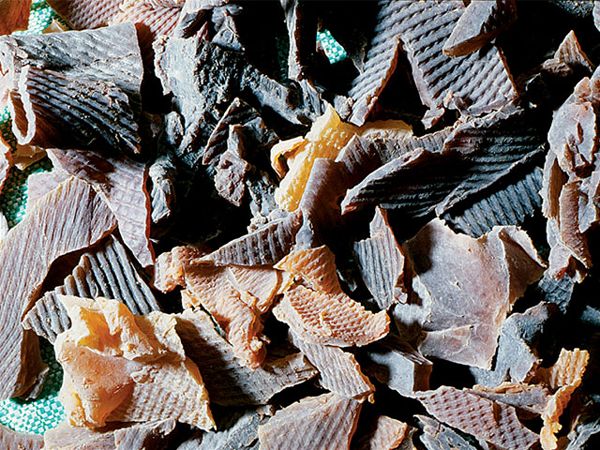
It's an argument in the off-road world: which is better? Die-hards say bias-ply but everyone else has their argument for why radial is the best choice. Before we give you the pros and cons for each, let's first break down the differences. Bias ply and radial both refer to carcass construction and how the materials are laid out. To understand, picture the centerline of the tire. With a radial, the carcass plies and steel cords are at 90 degrees to that centerline in a very uniform fashion running circumferentially around the tire. This makes for a durable tread in terms of wear resistance and better fuel economy, but the sidewall may be less stiff.
With a bias-ply, the plies will be at about 45 degrees to the centerline, at alternating angles in a crisscross pattern. That overlap will make them strong, but also causes them to generate a lot of heat, resulting in a tendency to flat-spot. Some radial tires do actually have a slight bias angle on at least one of the body plies, which is done for carcass protection, particularly for severe off-road use. But even though there is an angle (which may be referred to as a cross ply), it's so slight the tire is still allowed to be called a radial.
What makes a radial a better choice? Lots of sidewall flex (thanks to more radial-ply angles), it's commonly more stable (ideal for high-speed stuff like bombing down fire roads), and it performs well for mixed usage. On the downside, it can be more expensive and the sidewalls usually are less stiff (but the tread is strong). A bias-ply tire is usually cheaper, commonly has better puncture resistance because of the thicker, stiffer sidewall, and often does better in soft terrain.
Let's work backward: The term "directional" tire was born out of the ultra-high-performance tire industry, and the design was aimed at getting water out from under the tread at very high speeds. The directional could spit water from the center of the tire outward-a regular parting of the seas-to help wet and straight-line performance. The theory tends to be carried over for mud tires for the same reason and also for self-cleaning. Putting the tire on in the wrong direction could lead to hydroplaning, more noise, and usually weak-arse performance overall. So don't.
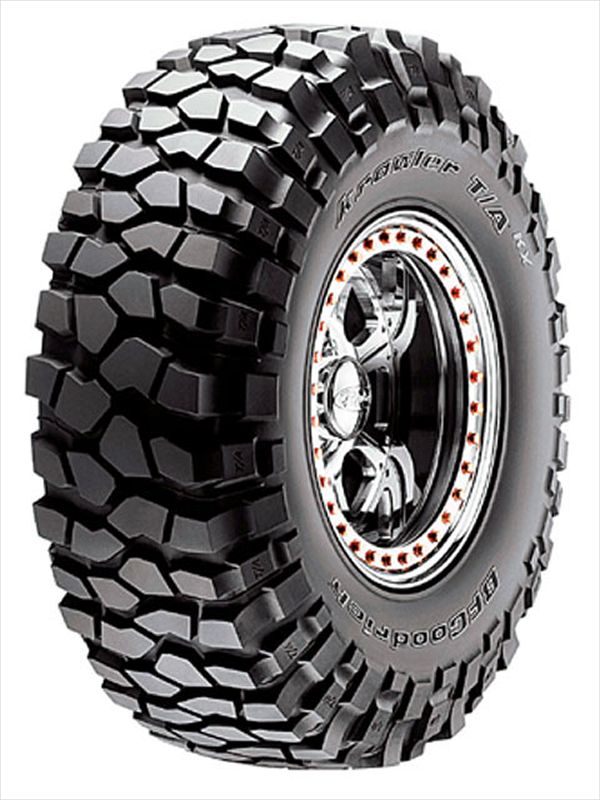 Since you've been paying attention, we know you understand when we say BFGoodrich's Krawler T/AKX has aggressive lugs in the tread and sidewall, a four-ply nylon carcass, a tri-polymer tread compound, and slightly angled alternating plies. The technology behind the tire originated with BFG's CORR racing rubber.
Since you've been paying attention, we know you understand when we say BFGoodrich's Krawler T/AKX has aggressive lugs in the tread and sidewall, a four-ply nylon carcass, a tri-polymer tread compound, and slightly angled alternating plies. The technology behind the tire originated with BFG's CORR racing rubber.
A "mild" tire is generally designed with more rubber than void, making it good for regular highway driving. There could be solid ribs for the tread pattern rather than grooves all the way through. That's not to say it won't function off-road; it could be an all-around performer, making it smooth on the street, but capable of light wheeling on the weekend. It's usually made from a softer compound, which tends to wear quicker than hard compounds. An "aggressive" tire typically has a more durable compound to help with cutting/chipping of the tread and puncture resistance off-road, and features more void than rubber as well as deep lugs for digging, sort of reminiscent of a tractor tire. Because there have been some compromises toward off-road traction and cut resistance, it may not wear as well and will probably seem noisy to you. That's because it is noisy since there is more void.
An "all-terrain" tire therefore could be the definition of mild. Its design is intended for it to perform good enough in all terrain-street, snow, wet, and mild off-roading. It's kind of the ultimate compromise in tire performance in order to give you a little taste of everything. A "mud" tire has a compromise toward performing on softer terrain, such as sand and mud. There's a little more tread void, so a lot more area to bite at the surface and fling it out as well as float across. And a "rockcrawling" tire commonly is larger, with tougher tread elements, but also soft enough to conform to and grip rocks. But the compound that makes the tread more difficult to cut or chip will likely compromise it in snow and rain, and it'll give up some road manners too. Does that mean a mud tire should never see rocks? Heck no. Those big lugs have been known to do really well in non-bog situations. The big picture is that all-terrain/mud/rock tires fall under the umbrella of light-truck tire, which means they're designed to shoulder a little more abuse than a passenger tire, so the carcass will be more robust for each.
It used to be that a "tall" tire was 35 inches. That's downright normal nowadays. A "fat" or "skinny" tire is mostly referencing its footprint width, or the width of rubber that is in contact with the street or trail or rock. Therefore, a "wide" tire has a wider footprint than a "skinny" tire. A "tall" tire is often the right pick for mud because it typically has a longer footprint for digging hard. But remember, as the tire size gets bigger (and therefore heavier), you need to make sure your truck is up to the task of running them-your stock brakes, axle, engine, and so on may not be able to handle the additional demand of rotating the major mass.
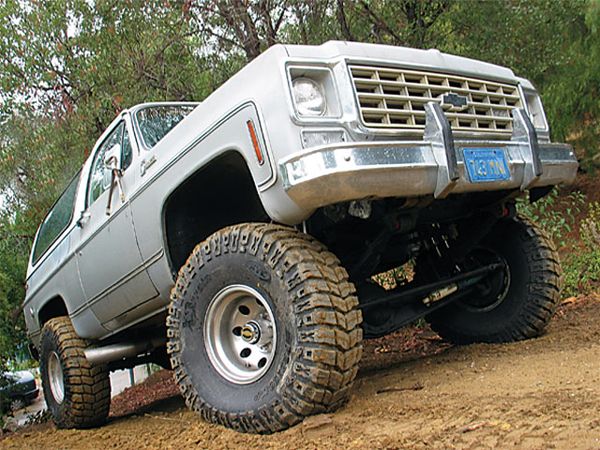 The X-Terrain has what Pro Comp calls Tri-Ply, three full-ply sidewalls matched to two steel belts as well as a nylon rap. Using our fingers we counted a six-ply tread, which is then coupled with XTC, their secret-formula Xtreme Traction Compound.
The X-Terrain has what Pro Comp calls Tri-Ply, three full-ply sidewalls matched to two steel belts as well as a nylon rap. Using our fingers we counted a six-ply tread, which is then coupled with XTC, their secret-formula Xtreme Traction Compound.
Atire's speed rating is the max speed it's certified to run, while the load index is the max load the tire can carry. When you're upgrading to a different tire size, you'll want to make sure the load index and speed rating are comparable to the OE-tire figures to keep things safe. So, don't go lower than stock for either.
The tire's profile refers to sidewall height. That means a low-profile tire has less sidewall. The aspect ratio (or series) is the ratio of sidewall height to tread width. If you take the Pro Comp Mud Terrain in size LT285/75R16, that 75 denotes that the sidewall height is about 75 percent of the tire's width. The higher the number, the taller the sidewall will look. Width is measured sidewall to sidewall and height is from the top of the tread to the wheel rim. Tread width is measured from side to side, while the depth is tread surface to the bottom of its grooves in 32nds. Pro Comp's Mud Terrain has a tread width of 8.65 and a tread depth of 18.5/32 (on average, truck tires are 17/32).
Another tire term that's popping up a lot lately is run-flat. That tire has a sidewall constructed in such a way that it can run without air and still support the weight of the vehicle for a certain number of miles at a specified speed or less. This is typically found in low-profile tires; since off-road-oriented tires have higher sidewall dimensions, it's difficult to make them into run-flats.
Your tire is full of numbers and letters that seem like internal codes. Here's how to crack 'em:
Let's take a Pro Comp Mud Terrain in size LT285/75R16. The "LT" is for light truck (passenger tires have a "P"). The first three numbers are the overall width of the tire, sidewall to sidewall. That number usually is listed in millimeters, so to switch to inches, divide it by 25.4. The next number is the aspect ratio. The "R" signifies that it's a radial. And the final number is the wheel diameter that will fit. Follow this formula to translate, although keep in mind that dimensional tolerances in one LT285/75R16 tire can make it differ from another with that same size designation:
width (mm) x 0.aspect ratio x 2 + wheeldiameter = overall dia. 25.4Or, you can figure it out as flotation size. A 35x12.50R15 breaks down as follows: 35 is its overall diameter, 12.50 is the width, and 15 is the rim diameter.